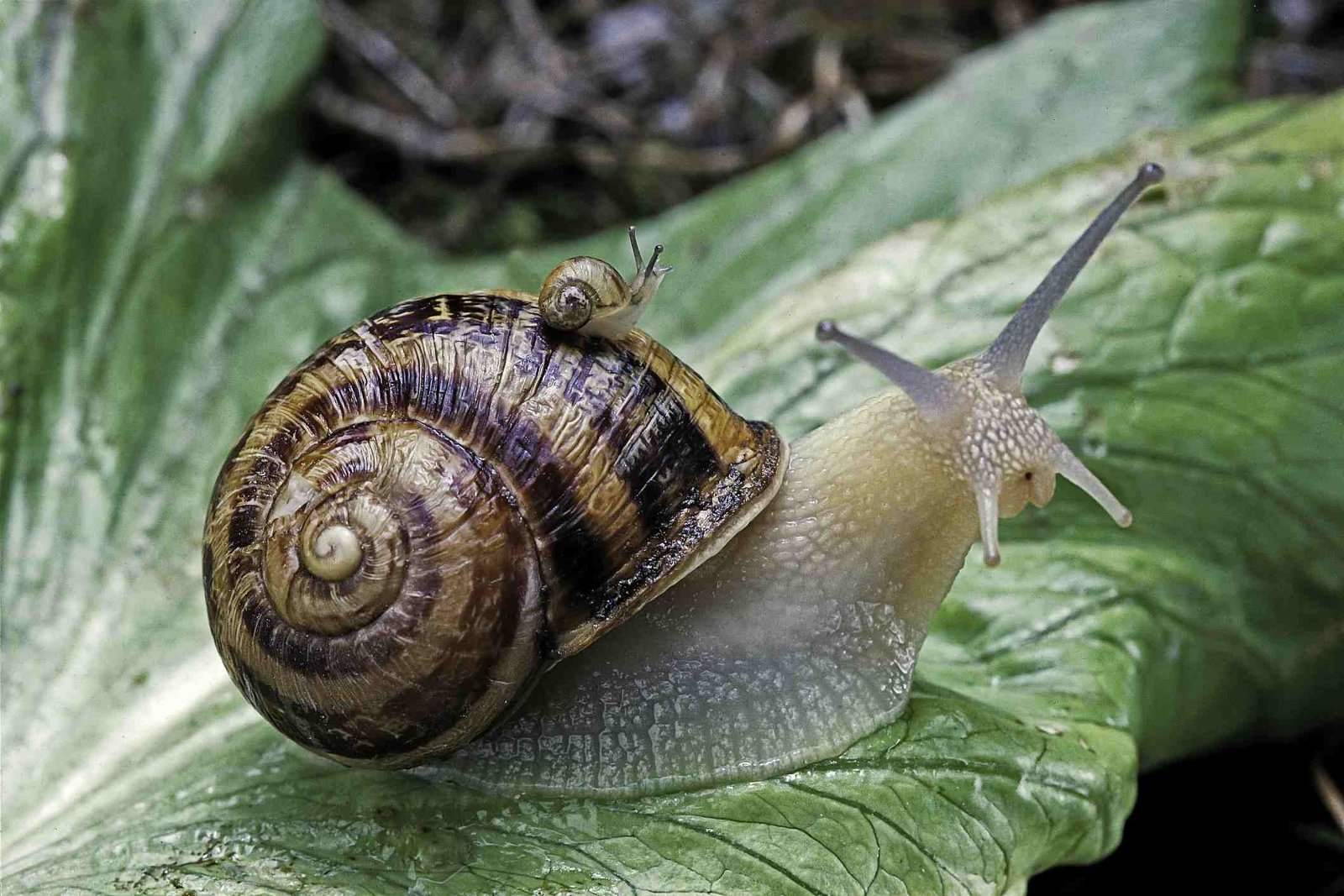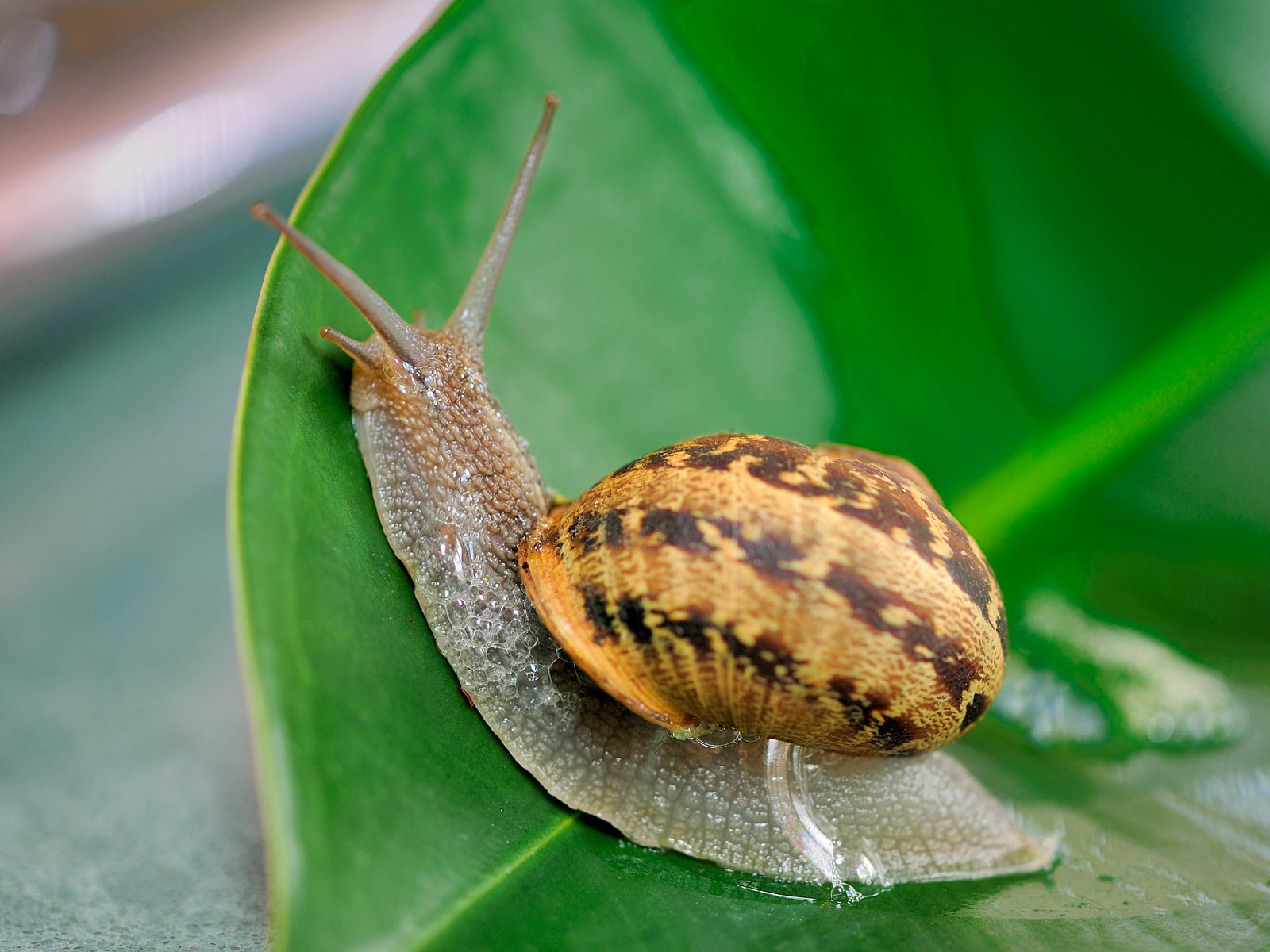Eco-Friendly Snail and Slug Control
Hey there, gardening friend. If you're like me and you love your garden but hate those slimy little snails and slugs that keep messing it up, then you're going to love what I'm about to share with you. Not only that, we will do it with natural snail and slug control.
Now, I know you're probably thinking, "how the heck do I get rid of these pests without using any of those nasty chemicals?" Well, my friend, I've got your back. I've put together this guide to natural, organic, and eco-friendly snail and slug control. This article is jam-packed with all the info you need to keep your landscape and garden looking amazing.
First things first, let's talk about these little critters. Snails and slugs are like slimy ninjas of the garden world so it's important to understand the behavior and biology of snails and slugs. These creatures are mollusks, a group of invertebrates that includes snails (with shells) and slugs (without shells). They come out at night or on cloudy days and just wreak havoc on your plants. But don't worry, we're going to put a stop to that.
Don’t Encourage Them
So, how do we do it? Well, it's all about making your garden a less cozy place for them to hang out. That means getting rid of any damp, shady spots where they like to hide. You can do this by trimming back branches, spacing out your plants, and getting rid of any old leaves or debris.
While mulch is beneficial for soil health, it can also create moist, cool environments that attract snails and slugs. Opt for coarse mulch materials like bark instead of fine mulches that retain moisture.
Watch your watering. Water your garden early in the morning, allowing the soil and plants to dry out during the day. This reduces the moisture levels that snails and slugs need to thrive. Use drip irrigation systems instead of overhead watering to target water directly to the roots of plants, minimizing the moisture on leaves and soil surfaces.
Why Are Snails and Slugs a Problem?
Snails and slugs feed on a wide variety of plants, including vegetables, flowers, and ornamental plants. They chew irregular holes in leaves, stems, and fruits, which can stunt plant growth or even kill young plants.
These pests can reproduce rapidly, with some species laying hundreds of eggs in a single season. This can lead to a severe infestation if not controlled early. Besides the practical damage, snails and slugs leave unsightly slime trails on plants, paving stones, and other surfaces.

Physical Barriers to Snails and Slugs
Now we're also going to set up some physical barriers to keep these pests away from your precious plants. Copper tape, crushed eggshells, and even a little sand or grit around the base of your plants can make it really hard for snails and slugs to get through.
Copper is a natural deterrent for snails and slugs. When they come into contact with copper, it causes a reaction that repels them. Place copper tape around the rims of pots, raised garden beds, and other areas you want to protect.
Crushed eggshells and diatomaceous earth create rough surfaces that snails and slugs find difficult to cross. Sprinkle these materials around the base of plants to form a protective barrier. A thick layer of coarse sand or grit around plants can discourage snails and slugs from crawling over it.
Coffee grounds are a popular and eco-friendly way to repel snails and slugs. The caffeine in coffee is toxic to these pests, and the rough texture deters them from crossing. Sprinkle used coffee grounds around the base of plants. Reapply after rain or watering.
Diatomaceous Earth
Diatomaceous earth can be an effective natural method for controlling slugs and snails in your lawn and garden. Sprinkle a thin layer of food-grade diatomaceous earth around the base of plants or create a barrier around the perimeter of your garden beds. Reapply after rain or heavy dew, as moisture reduces its effectiveness. For lawn applications, spread a light dusting over the affected areas.
In addition to slugs and snails, diatomaceous earth can help control various other garden pests. It's effective against aphids, mites, thrips, and other soft-bodied insects. The microscopic sharp edges of diatomaceous earth particles damage the exoskeletons of these pests, causing dehydration. It can also deter some larger pests like ants and earwigs.
While diatomaceous earth is generally safe for beneficial insects like bees when they're in flight, it's best to avoid applying it directly to flowers or other areas where pollinators frequently land. Remember that diatomaceous earth is a physical deterrent rather than a poison, so it won't harm larger animals or contaminate your soil. However, it can be irritating if inhaled, so wear a dust mask when applying it to your garden.
DIY Traps With Natural Bait
Beer Traps
Bury shallow containers, like yogurt cups or tuna cans, so their rims are level with the soil surface. Fill them with beer, which attracts snails and slugs. They’ll crawl in and drown. Check the traps daily and dispose of the contents.
Grapefruit Halves
After enjoying a grapefruit, place the empty rind upside down in your garden. Snails and slugs will be attracted to the moisture and shelter inside. Collect and remove them each morning.
Predators
Now, if you want to take it to the next level, you need to get some natural predators on your side. I'm talking about birds, frogs, toads, and even some badass beetles that love to munch on snails and slugs. All you have to do is make your garden a welcoming place for these guys, and they'll do the rest.
Ground beetles are natural predators of snails and slugs. Encourage them by providing shelter in the form of rocks, logs, and leaf litter in your garden. Carabid Beetles are particularly effective at controlling snail and slug populations. Avoid using broad-spectrum insecticides that could harm these beneficial insects.

DIY Snail and Slug Sprays
Garlic Spray
Garlic is a natural repellent for a variety of pests, including snails and slugs. The strong odor and compounds in garlic disrupt their feeding patterns. Recipe: Crush 2-3 garlic cloves and soak them in a gallon of water overnight. Strain the mixture and pour it into a spray bottle. Spray the solution directly onto plants and around the garden where snails and slugs are active. Application: Reapply every few days or after rain.
Vinegar Solution
Vinegar is highly acidic and can be used as a spot treatment to kill snails and slugs on contact. Recipe: Mix equal parts white vinegar and water in a spray bottle. Spray directly on snails and slugs when you see them. Caution: Be careful when using vinegar near plants as it can damage foliage.
DIY Slug and Snail Bait
You can create your own bait using natural ingredients to attract and kill snails and slugs. Recipe: Mix bran or oatmeal with powdered sugar to attract snails and slugs. Add yeast or beer to the mixture to make it more appealing. Place the bait in shallow containers or directly on the soil near affected plants. Check the bait regularly and remove any trapped snails or slugs.
But what if you want to take matters into your own hands? Well, that's where my homemade remedies come in. Coffee grounds, garlic spray, and even a little DIY snail and slug bait can work wonders. And the best part? They're all totally natural and eco-friendly.
Additional Deterrents Soil Adjustments
Test your soil’s pH and add lime if necessary to raise the pH. Snails and slugs prefer acidic soil, so making it more alkaline can deter them. Use organic fertilizers to promote healthy plant growth and create an environment where plants can outcompete pests.
Of course, getting rid of snails and slugs isn't just a one-time thing. You have to stay on top of it. That means regular garden maintenance, keeping an eye out for any new invaders, and maybe even doing a little companion planting to keep them away for good.
Make It Easy On Yourself With Repellent Plants
Lavender is a popular choice for repelling snails and slugs. Its strong scent and fuzzy leaves act as a natural deterrent, making it an attractive and functional addition to gardens. Rosemary is another aromatic herb that these pests tend to avoid, offering a similar dual benefit of culinary use and pest control.
Fennel and wormwood are effective slug and snail repellents due to their strong, bitter taste. These plants can be strategically placed around vulnerable crops to create a protective barrier. Mint is also known to deter these garden pests, but it should be planted with caution as it can spread aggressively.
Certain flowers like geraniums and nasturtiums have been found to repel snails and slugs. Their pungent scent and bitter taste make them unappealing to these mollusks. Additionally, plants with rough or hairy leaves, such as rue and artemisia, are generally avoided by snails and slugs, as the texture makes it difficult for them to move across the foliage.
Conclusion
So there you have it, folks. The ultimate guide to natural, organic, and eco-friendly snail and slug control. Trust me, if you follow these steps, you'll be saying goodbye to those slimy pests and hello to a gorgeous, healthy garden in no time.
By understanding the conditions that attract these pests and taking proactive steps to manage your garden environment, you can protect your plants without resorting to harmful chemicals. Remember, the key to success is persistence and adaptability—monitor your garden regularly, be patient, and adjust your methods as needed to achieve long-term control.
So what are you waiting for? Let's get out there and take back your garden from those pesky snails and slugs. With these natural, organic, and eco-friendly methods, you'll be the envy of the neighborhood in no time.
